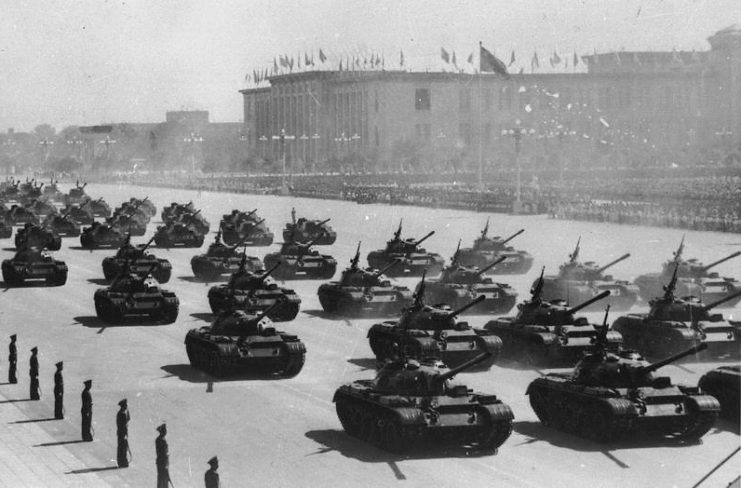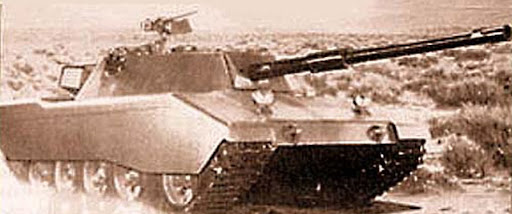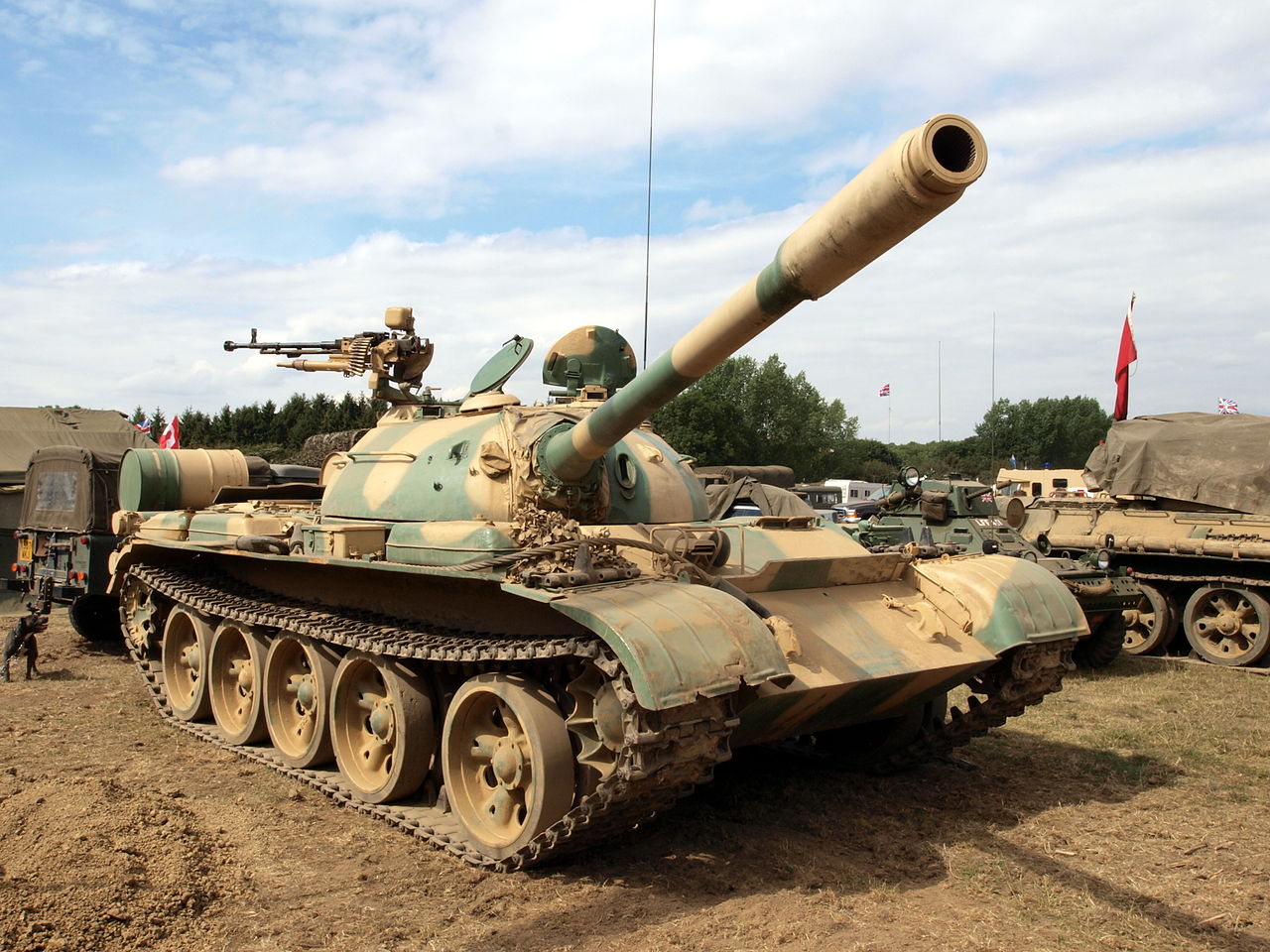Another weird tank to be developed during the Cold War was the Jaguar, a 1980s joint Chinese and American project that was intended to modernize the Type 59. Unsurprisingly, the political situation at the time complicated the tank’s development, but a prototype reached completion. The finished vehicle looked like a strange combination of a T-55, Leopard, and Abrams.
The idea of the US and China joining forces in the 1980s seems crazy, but this indeed happened thanks to the work of President Nixon, who started a period of detente between the US and China in the 1970s. The two nations worked together as they shared a common enemy: the Soviet Union.
Ironically, the tank the two nations would build together was based on a Soviet design.
At the time, China possessed an enormous army, but it was supplied with outdated equipment and weapons. The Jaguar was part of China’s attempt to change this.
US-Chinese collaboration
In the mid-1980s Cadillac Cage and the China National Machinery & Equipment Import & Export Corporation (or CMC) began work on this new tank. The vehicle was based on the Type 59, China’s almost identical copy of the Soviet T-54.
10,000 Type 59s were built by China and made up the bulk of their armored forces. However, as the basic chassis of the vehicle was a 1940s-era design, the Type 59 was massively outdated compared to the latest main battle tanks (MBTs).

But this chassis was solid, adaptable, reliable, and available in large numbers, so it would serve as the basis of the Jaguar. Western technology was used to supplement and bring the design up to date, while China’s cheap manufacturing abilities covered its production.
The project was never meant to produce a world-leading MBT that could equal vehicles like the Challenger I, Abrams and Leopard, but instead a tank that could handle most threats on the battlefield at a cheap price.
The expected price per Jaguar was around $1 million, significantly less than something like an M1A1 Abrams that cost about $4 million at the time. The Jaguar wasn’t a match for these ground-up modern MBTs in a one-on-one fight, but China wanted quantity, and four Jaguars for every Abrams was a figure they were happy with.
Bang for your buck
Chinese upgraded Type 59 MBT "Jaguar" pic.twitter.com/Gw1CHn3YDp
— Caesar (@Ninja998998) October 19, 2018
The Jaguar may have been cheap but it was still a very capable tank, with virtually every important aspect of the base Type 59 being improved. It was armed with a Chinese-made version of the US M68 105 mm rifled gun, a gun that itself is a US-made copy of the legendary British L7. This gun is Britain’s most successful tank gun, and was used on many tanks during the Cold War, like the Leopard, M48 Patton, M60, Centurion, and even the early M1 Abrams. It is still in service today.
In another stroke of irony, the British designed the L7 in the 1950s as a direct response to the T-54, the basis for the Type 59.
Alongside the 105 mm gun was a coaxial 7.62 mm machine gun, and the tank could come with an optional .50 caliber machine gun on the roof.
An important feature was the main gun’s full stabilization and fire control system, which was sorely lacking on the Type 59 (early models missed out on a stabilised gun completely). The Jaguar had a laser range finder and used the same British fire control system used on Cadillac Cage’s Stingray light tank, giving it the ability to fire on the move at other moving vehicles.
For nighttime activities, the Jaguar was also equipped with image intensification night vision.
Its layout was the same as the base vehicle, with the engine at the rear, three crew in the turret, and the driver at the front. Armor protection remained the same as the Type 59, but was augmented by a shield of spaced armor, which gave the Jaguar a similar appearance to tanks with composite armor.
All of these changes increased the tank’s weight from 40 tons to over 45, so a 750 hp (power claims vary) Detroit Diesel was used instead, resulting in an improved power to weight ratio. Its suspension was the same as the Type 59’s, but Cadillac Cage offered a hydropneumatic torsion bar suspension upgrade.
The Jaguar that never ran

The project moved rapidly as it was mostly built from pre-existing components. By October 1989 a completed vehicle was undergoing testing in the US and apparently proved to be a fantastic vehicle for its class. However, relations between the US and China deteriorated that same year after the Tiananmen Square Massacre and China backed out of the project. As the tank was clearly a capable vehicle the US continued on alone with the aim of exporting it around the world to numerous countries using T-54s and Type 59s.
But the final nail in the coffin for the Jaguar was the end of the Cold War. Suddenly, the war looked a lot less likely, and the value of tanks and equipment, in general, plummeted, with nations now able to buy advanced tanks like the Leopard II for cheap. The US gave up on the Jaguar, and the project was canceled.
